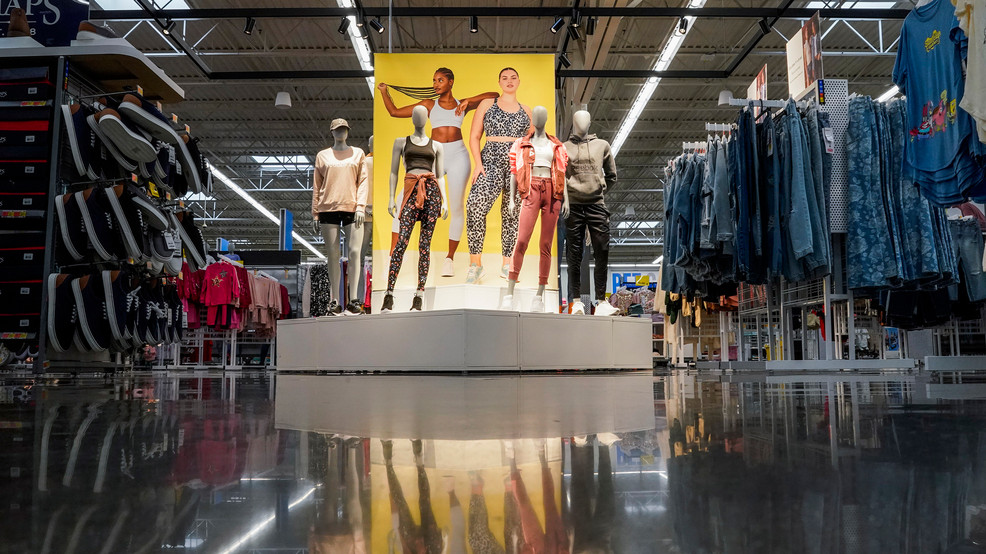
WASHINGTON (TND) — Americans are increasingly relying on credit to support their spending habits, leading to record highs in credit card debt at a time where interest rates have gone up rapidly as the Federal Reserve tries to bring inflation down.
High inflation has lingered for more than two years as the U.S. economy came roaring back from a pandemic-induced recession, making it more expensive for average Americans to pay for groceries, gas and basic services like getting a haircut or going out to eat.
Despite the high prices, consumers have continued to spend throughout the pandemic recovery and helped uphold the economy along with a strong jobs market that has continued to add jobs and keep unemployment low.
Consumer spending rose 0.5% in April from May, beating economists’ expectations and again showing evidence that people are willing to spend on goods and services despite the potential for an economic downturn.
The continued spending has come at a cost, with credit card debt held by Americans nearing $1 trillion, according to Federal Reserve data. By some estimates, American consumers have already crossed that threshold and are holding an average household balance of $10,000. With interest rates for credit cards at 20% and above, it can become expensive quickly and linger for years.
According to a WalletHub analysis, the average household would reach a “breaking point” in credit card debt at $12,000.
“If we don’t change our habits, credit card debt will become a vulnerability in the next few years,” said WalletHub analyst Jill Gonzalez.
While balances are growing overall, nearly half of all Americans are also paying off their credit card bills at the end of the month, meaning they are carrying no debt and are gaining the rewards such as cash back or airline miles in exchange for spending.
“Broadly speaking, I don’t think credit card debt is a significant problem for the economy right now,” said Ted Rossman, senior industry analyst at BankRate. “In some respects, it’s actually good for the economy that balances are growing, since consumer spending powers most of economic growth. There are also factors like population growth and increasing card usage as cash continues to fade away.
“It usually takes something pretty extraordinary for credit card balances to fall on a broad scale (such as the financial crisis and the pandemic).”
While consumers have been able to continue powering the economy through robust spending, there have been some cracks starting to show along with slipping confidence in the economy. It’s also hard to project how long people will be able or willing to spend despite higher prices and wages that are not keeping up with inflation.
“It’s difficult to predict how much longer people will be able to hold out, but so far, they’ve lasted by reducing their spending to just the necessities and by tapping into their savings and/or credit cards,” Gonzalez said. “Overall, consumers with excellent credit are significantly more financially prepared to navigate economic downturns than those with subprime credit. This is because they typically have more money in savings accounts and emergency funds, as well as lower rates on their credit cards.”
The strength of the job market has helped sustain consumers’ spending habits as many people have been able to secure higher wages and have been able to find a job. Unemployment has hovered near historical lows for months and businesses have continued to add jobs at a historically strong pace even though those figures have declined from the highs reached last year.
“It doesn’t feel great because inflation has been outpacing wage growth, but the truth is that almost everyone who wants a job has one, and this has been helping to keep Americans’ finances on track,” Rossman said. “Inflation and higher interest rates are certainly important issues, and for all that we hear of the $2-plus trillion in increased savings that Americans amassed during the pandemic, much of that has been spent, especially among lower- and middle-income households. But the job market is the biggest predictor of whether or not people can pay their bills on time.”
In addition to building up demand during shutdowns, the pandemic also helped usher in a new payment method for consumers who were stuck at home and forced to do any shopping online. Buy-now, pay-later services like Affirm and Klarna have grown in popularity along with the online shopping boom, affording consumers the ability to make big purchases over time.
Many of the most popular options also come with a fixed term, which helps avoid a scenario like a minimum credit card payment that can take years to pay off.
“Sometimes known as ‘reverse layaway,’ buy now, pay later is desirable because people can get items now and pay for them over time. And with credit card rates at record highs, there’s a school of thought that buy now, pay later is more responsible debt,” Rossman said.
But there are also downsides to the services even though they can be an interest-free way to space out purchases.
“Buy now, pay later services have become an easy way for consumers to delay paying for purchases, especially in the context of high inflation,” Gonzalez said. “However, they can encourage consumers to overspend on things they wouldn’t normally be able to afford, and borrow more money. This type of debt can easily become unsustainable and destabilize consumers and the economy.”
